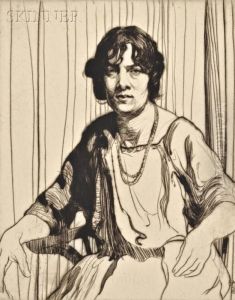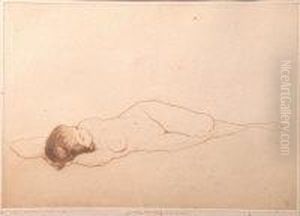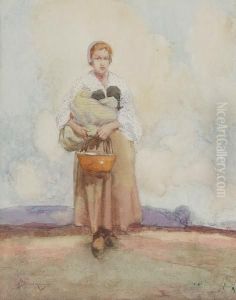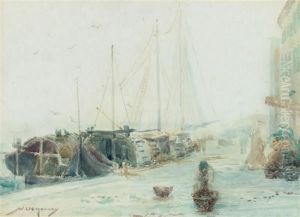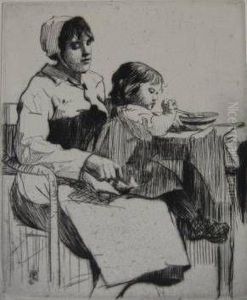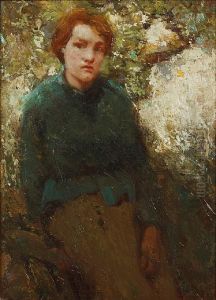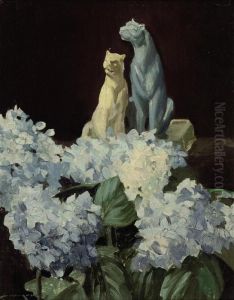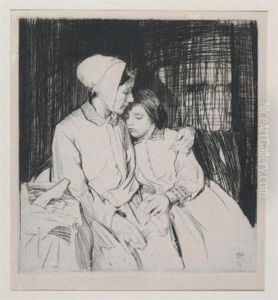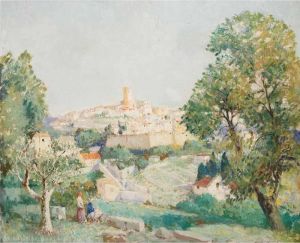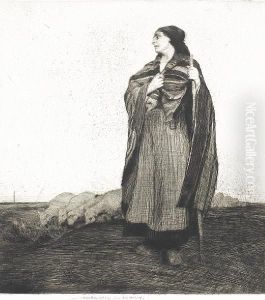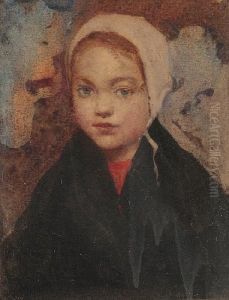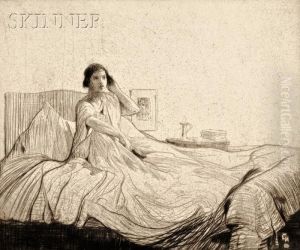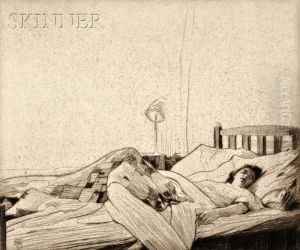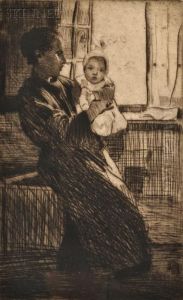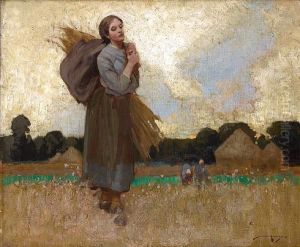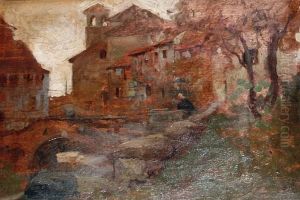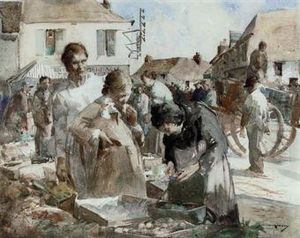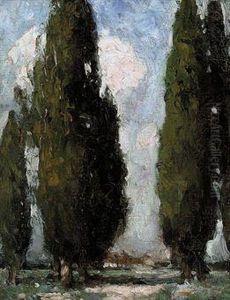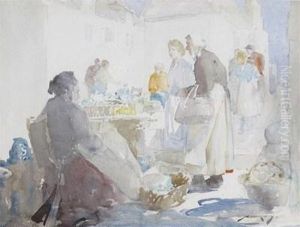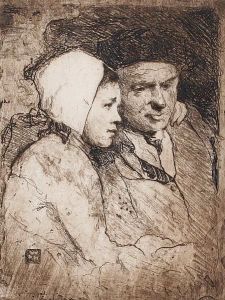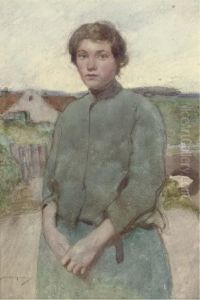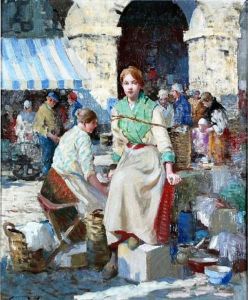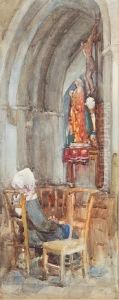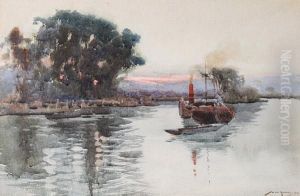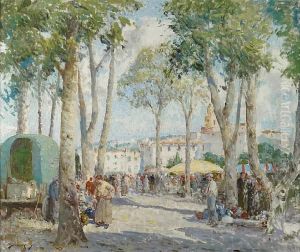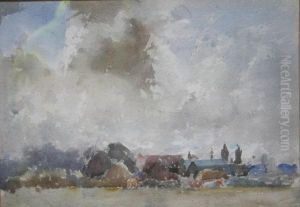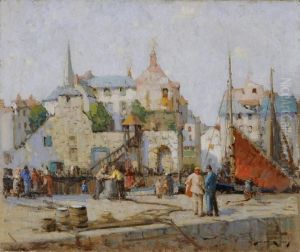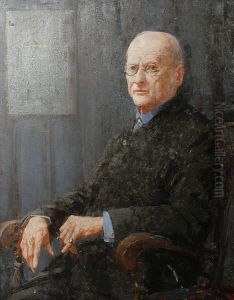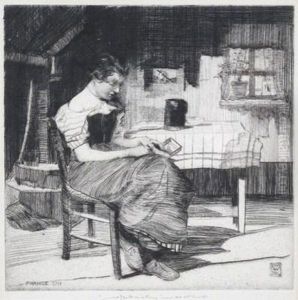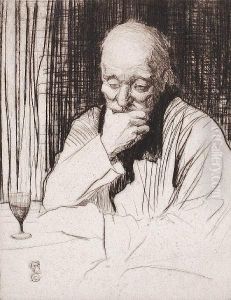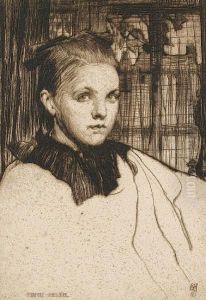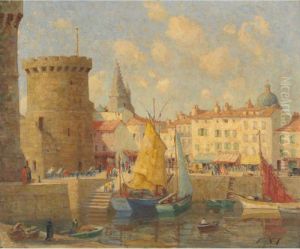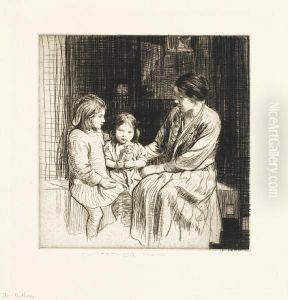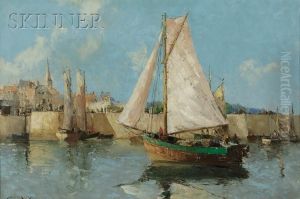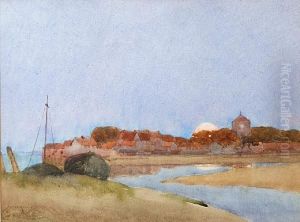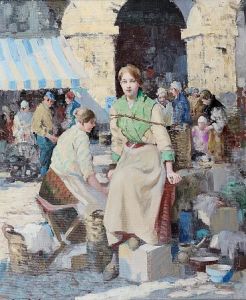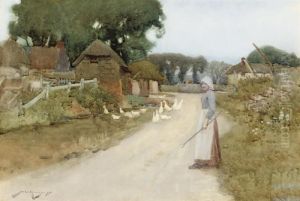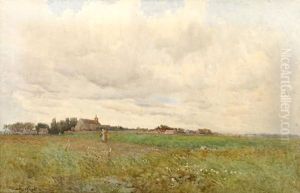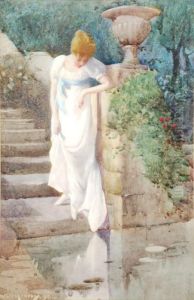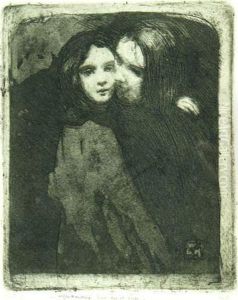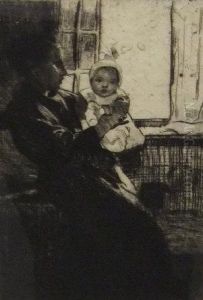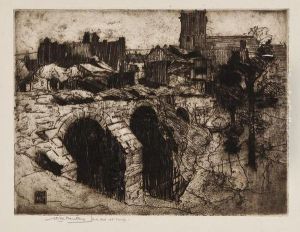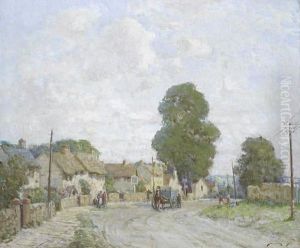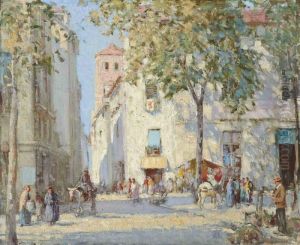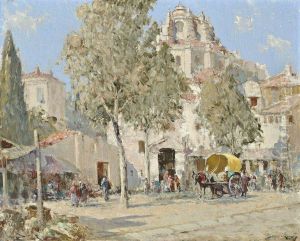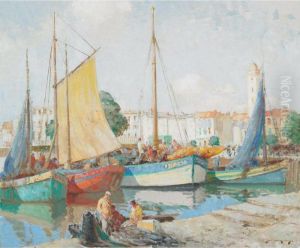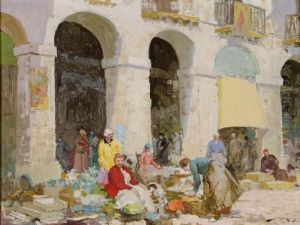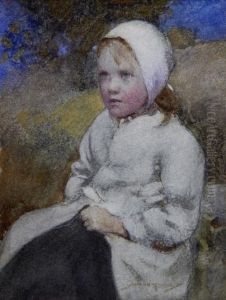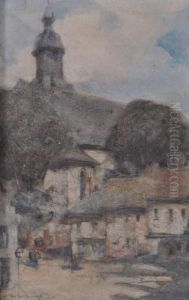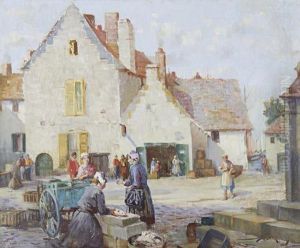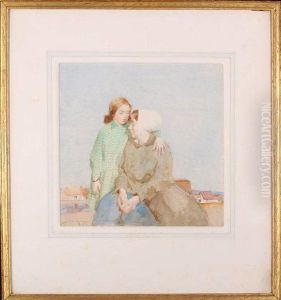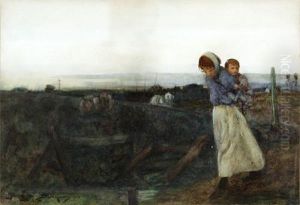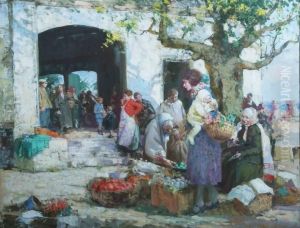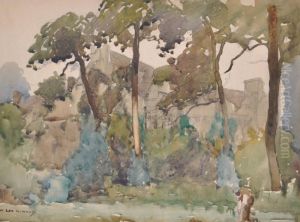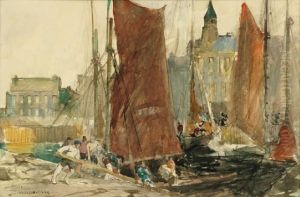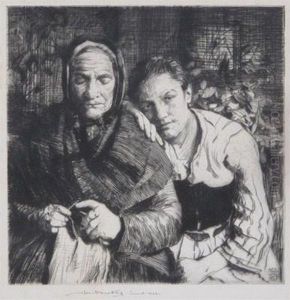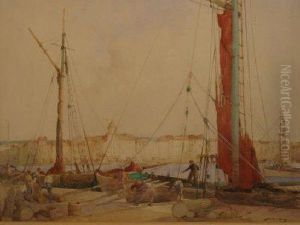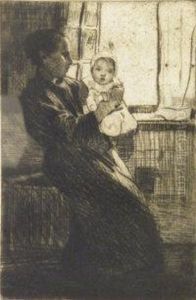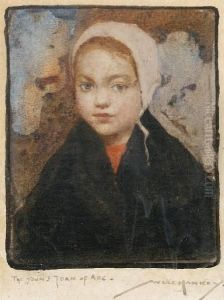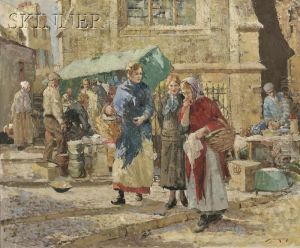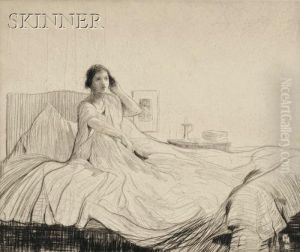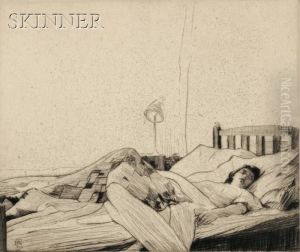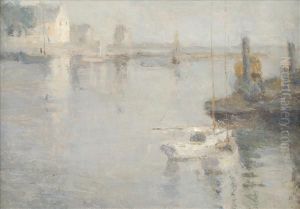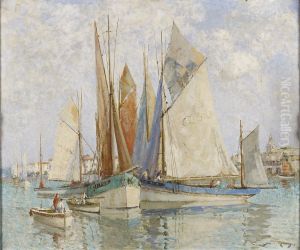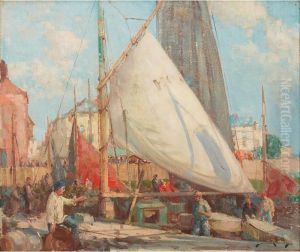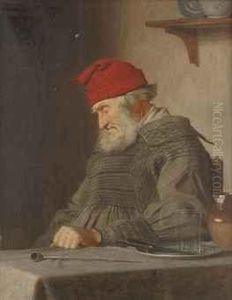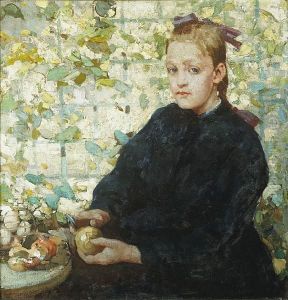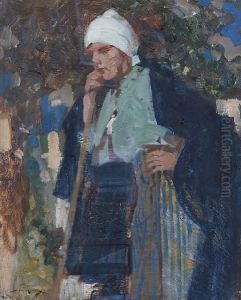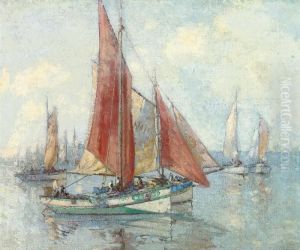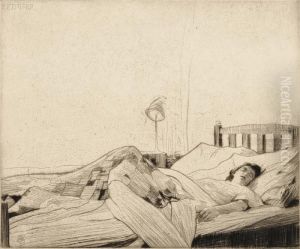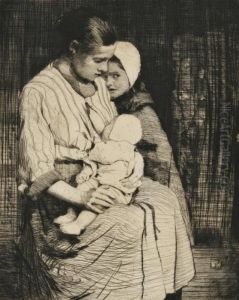William Lee Hankey Paintings
William Lee Hankey was a British painter and etcher whose work captures the essence of rural and coastal life, often focusing on scenes of Brittany, France, and the communities of England. Born in Chester, England, on September 9, 1869, Hankey developed an early interest in art, which led him to study at the Chester School of Art before moving on to the Royal College of Art in London. He further honed his skills at the prestigious Julian Academy in Paris, where he was influenced by the French Impressionists and Post-Impressionists, whose emphasis on light, color, and everyday life would significantly shape his own artistic approach.
Throughout his career, Hankey was well-known for his depictions of the poor and working-class figures, often imbued with a sense of dignity and serene beauty. His travels through rural France and England provided ample subjects for his canvases and etchings, where he frequently portrayed scenes of daily life with a sympathetic and tender gaze. After serving in the Boer War as a member of the Artists' Rifles, Hankey's work deepened in emotional intensity, reflecting perhaps a personal response to the hardships and realities of war.
In addition to his paintings and etchings, Hankey was also a successful illustrator, contributing to books and periodicals of his time. His mastery of etching, a skill that he is particularly remembered for, allowed him to produce works of remarkable detail and atmosphere, often using this medium to explore the effects of light and shadow in the landscape and on the human figure.
Hankey's work was widely exhibited during his lifetime, including shows at the Royal Academy, the Royal Society of British Artists, and the Royal Institute of Painters in Water Colours, among others. His art found critical acclaim and commercial success, with his etchings especially sought after by collectors.
William Lee Hankey's contribution to British art lies not only in his depictions of the English and French countryside and its people but also in his technical skill and emotional depth. He passed away on January 10, 1952, leaving behind a body of work that continues to be celebrated for its warmth, humanity, and artistic excellence.
